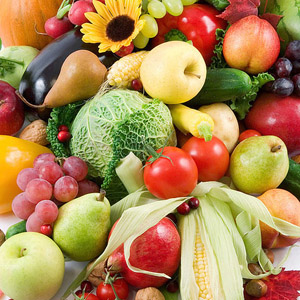食物繊維摂取量と心血管疾患リスクの関係を調査したプール解析の報告です.食物繊維総量,穀物繊維,果実繊維については負の相関が見られましたが野菜繊維については有意ではありませんでした.
ところで,この文献を参照した日本人の食事摂取基準 2015 年版では『1 日 24 g 以上の繊維摂取で心筋梗塞死亡率が低下する』と述べていましたが本文にはそのような記述はありませんでした.
A pooled Analysis of Cohort Studies
Mark A. Pereira, PhD; Eilis O’Reilly, MSc; Katarina Augustsson, PhD; Gary E. Fraser, MBChB, PhD; Uri Goldbourt, PhD; Berit L. Heitmann, PhD; Goran Hallmans, MD, PhD; Paul Knekt, PhD; Simin Liu, MD, ScD; Pirjo Pietinen, DSc; Donna Spiegelman, ScD; June Stevens, MS, PhD; Jarmo Virtamo, MD; Walter C. Willett, MD; Alberto Ascherio, MD
要約
背景:食物繊維摂取量と心血管疾患リスクを比較した研究はこれまで殆どなく,食物繊維の種類(穀物,果実または野菜)の比較や性に特異的な結果を含むものに留まっていた.本試験の目的は食物繊維とその種類と心血管疾患リスクとのプール解析を行うことであった.
方法:我々は米国とヨーロッパの前向きコホート試験10件のオリジナルデータを解析し,食物繊維摂取量と心血管疾患の関連を推定した.
結果:91,058 名の男性および 245,186 名の女性を 6 から 10 年以上の期間経過観察し,5,249 件の冠動脈症例,2,011 名の冠動脈疾患死亡が発生した.人口学的因子,体格指数,生活スタイル因子での調整後では,エネルギー調整および食物繊維総量の測定誤差に関して 10 g/day 増加するごとに全心血管イベントの 14 % 減少と相関しており,相対リスクは 0.86, 95 % 信頼区間は0.78-0.96 であった.また冠動脈疾患死亡の 27 % 減少と相関しており相対リスクは 0.73, 95 % 信頼区間は 0.61-0.87 であった.穀物,果実,野菜の食物繊維摂取量と全心血管疾患イベント発生との関連においては,10 g/day 増加ごとにそれぞれ相対リスク 0.90, 95 % 信頼区間 0.77-1.07, 相対リスク 0.84, 95 % 信頼区間 0.70-0.99, 相対リスク 1.00, 95 % 信頼区間 0.88-1.13 であった.また死亡との関連では相対リスク 0.75, 95 % 信頼区間 0.63-0.91, 相対リスク 0.70, 95 % 信頼区間 0.55-0.89, 相対リスク 1.00, 95 % 信頼区間 0.82-1.23 であった.男女とも結果はよく似ていた.
結論:穀物,果実および野菜の食物繊維の消費は心血管疾患リスクと負の相関が見られる.
Arch Inern Med. 2004; 164: 370-376
食物繊維は様々な機序を通じて,すなわち血清脂質組成の改善,降圧作用並びにインスリン感受性と線溶系活性とを改善することで心血管疾患リスクを減少させているのかもしれない.いくつかの観察研究において食物繊維が心血管疾患のリスク因子と負の相関を示すことが分かってきた.
最低 10 件の前向きコホート試験で食物繊維と心血管疾患発生との関係を精査した.それらの試験のうち一つを除いて全て負の相関を報告していた.方法および解析技術の相違により繊維摂取総量および繊維の種類(由来が穀物か果実か野菜かおよび水溶性か否か)のこの相関の強度は不明のままであった.更に,4編のみの試験では男性を除外して女性における所見を報告していた.他の生活スタイル因子によるネガティブな刊行バイアスおよび残差交絡の可能性が残っている.ゆえに我々は米国およびヨーロッパにおける 10 件の前向きコホート試験から系統的解析を行った.それには Pooling Project of Cohort Studies on Diet and Coronary Disease を含んでいた.
方法
このプール解析には下記の適合基準を適用した.すなわち,最低 150 例の冠動脈疾患発症例を有する前向き試験,日常の食事摂取の評価,および食事評価法の検証試験またはそれに近い関連する機器.文献検索およびその道の専門家への質問を通じて 14 の試験が適合基準に合致するとして同定され,11 試験の研究者がプロジェクトにおけるデータの提供に賛同した.1 編の試験は食物繊維摂取量のデータを有していないため除外された.利用できる 3 編の試験の研究者は,皆米国からの報告だったのだが,試験への参加に賛同しなかった.残った試験を Table 1 に示す.Nurses’ Health Study (NHS) の経験の解析のための観察期間は,食事摂取を繰り返し評価していることと長期間の観察期間という利点から2つの期間に分割した.1980-1986 年の観察期間は Nurses’ Health Study A (NHSa) と呼ばれ,1986 年まで心血管疾患を発症しなかった女性の 1986-1996 年の観察期間は Nurses’ Health Study B (NHSb) と呼ばれた.生存期間の underlying theory に基づき,異なる期間における人-期間のブロックは,同じ人に由来したとしても統計的に独立であった.ゆえに,これらの2つの期間からのプール推定値は一つの期間を用いたのと等価であり,1980 年と比較して 1986 年における強化された曝露評価における利点を有している.
食事評価
いずれの試験においても食物摂取頻度アンケートまたは食事履歴計器によるベースラインの食事を計測していた.Adventist Health Study (AHS) においては原食物繊維だけを評価していた.そのため,このコホートにおいては食物繊維総量の近似のため原食物繊維に 3.5 を掛け算した.これは他の試験から得られた原食物繊維の食物繊維総量に対する比である.食物繊維総量に加え,我々は 3 つの食品群からの繊維摂取量を調査した.それには穀物(全粒穀物),果実および野菜が含まれ,不溶性食物繊維(ヘミセルロース,セルロースおよびリグニン)および水溶性食物繊維(ペクチン,ガム質および粘液質)も含まれる.穀物,果実および野菜由来の繊維は AHS および Glostrup Population Study (GPS) 以外のすべての試験で利用可能であった.広い種類の食品が各々の繊維の種類に寄与しており,ある種の食物は多くの試験において相対的に寄与していた.トウモロコシやエンドウなどのでんぷん質の野菜はすべての試験において野菜の繊維に実質的に寄与していた.Finish Mobile Clinic Health Examination Survey (FMC) および Vasterbotten Intervention Program (VIP) のみがバレイショの繊維を野菜の繊維に含めており,これら 2 編の試験においてはバレイショの繊維は野菜の繊維の一般的形態であった.6 編の試験のみが不溶性食物繊維および水溶性食物繊維の推定値を有していたが,食品成分表に基づいてこれらの繊維の種類を推定する標準的方法がなかったため,結果の解釈は注意深くあるべきである.
症例確認
標準化基準を用いて全ての試験における致死的または非致死的心筋梗塞症例の確認を行った.IWHS のみが心血管疾患発症において自己申告データであったため,この試験からは致死的心筋梗塞症例のみを抽出した.我々は全ての致死性および非致死性冠動脈イベントおよび冠動脈疾患死について個別分析を行った.
統計解析
ベースライン人口のエネルギー摂取量の平均値を対数変換した研究特異的な 3SD より大又は小のエネルギー摂取量を報告した場合には約 1 % の参加者を各試験から除外した.臨床的な疾患の出現自体が食事変化をもたらす可能性があるため,我々はまたベースラインにおいて心血管疾患や糖尿病,癌(黒色腫でない皮膚がんを除く)の既往のある参加者も除外した.ARIC, FMC, GPS および IWHS の 4 試験では10 年より長い観察期間は試験期間中の異質性を減らすために切り捨てられた.それぞれのコホート内で繊維の増加ごとの相対リスク (RRs)(発症率の比)を比例ハザード回帰モデルを用いて計算した.SAS 統計ソフトバージョン 8 の PRC PHREG プログラムで計算した.相対リスクは関連するベースライン人口,生活スタイルおよび食事因子で調整した.共変量のカテゴリーは若干の例外はあるものの試験の間で標準化した.既往歴については試験の間の情報は次のいくつかまたは全てを含んでいる.すなわち,疾患の自己申告,内服薬の使用または生体計測(例,血圧と血清コレステロール値など).身体活動については試験の間の情報は,低い・中等度・高い余暇活動の単純なカテゴリーから総身体活動の連続値の代謝指数にまで渡り,代謝指数は 5 群に分類された. 1 編の試験では身体活動は利用できなかった.2 編の試験ではアルコール摂取が利用できなかった.三つの回帰モデルで次のように計算した.モデル 1 は年齢(歳),エネルギー摂取量(1日あたりのキロカロリー),喫煙状態(一度も喫煙したことがない,かつて喫煙していた,または現在喫煙しておりその本数が 1 日 1-4, 5-14, 15-24, 25 本以上),体格指数 (<23, 23-<25, 25-<27.5, 27.5-<30, 30-), 身体活動(レベル 1-5),学歴(高校未満,高校,大学以上),アルコール摂取量 (0, <5, 5-<10, 10-<15, 15-<30, 30-<50, 50- mL/d), 複合ビタミン剤服用(はい,いいえ),高コレステロール血症(はい,いいえ)そして高血圧(はい,いいえ).モデル 2 はモデル 1 の共変量を含み,さらにエネルギーで調整した飽和脂肪酸の五分位数,多価不飽和脂肪酸,そしてコレステロール.モデル 3 はモデル 2 の共変量を含み,さらにエネルギーで調整した葉酸およびビタミン E サプリメントの五分位数.
両側 95 % 信頼区間を計算した.我々は DerSimonian および Laird により開発されたランダム効果モデルを採用し Log RRs を結合した.つまり試験特異的相対リスクをその分散の合計の逆数で重み付けしたものである.我々は試験間の分散要素 Q 統計値の推定値を用いて試験間の異質性をテストした.
回帰分析を実行する前に,食物繊維およびすべての食事の共変量をエネルギー摂取量について各試験内で調整した.我々はエネルギーで調整した食物繊維を連続変数として解析した(10 g/d ごとの増分).我々はまた五分位数および十分位数もまた調べ,コホート特異的な分布に基づき,相関が線形で連続値の繊維の解析について一貫性のあるものかを定義した.食物繊維摂取量の境界値の絶対値を用いて,すべての試験について可能な範囲で全ての食物繊維摂取量にわたって我々はまた心血管疾患のリスクを調べた.五分位間での傾向の検定に P 値を計算するため,参加者は五分位数の食物繊維摂取量の中央値を割り付けられ,この値は Cox 回帰モデルの連続項として入力された.連続値としての食物繊維摂取量の結果は食事測定誤差によるバイアスを補正され,繊維単独においては,回帰補正法を用いた.この補正は特異的な食物源からの繊維摂取量には実行できなかった.というのは繊維のこれらの源を含む検証試験が殆どなされていなかったからである.他の共変量およびそのモデルにおける食事因子への測定誤差補正はなされなかった.
我々は以下の共変量が繊維摂取量と心血管疾患リスクの関係を修飾するか否かを評価した.すなわち,性別,年齢(10歳ごとのカテゴリー),観察期間,体格指数 (<25, 25-30, >30), 喫煙(全く吸わない vs 以前喫煙歴ありまたは現在喫煙している),飽和脂肪酸摂取量(エネルギー摂取量中のパーセンテージ五分位数),そして高血圧ならびに高脂血症の既往(陽性又は陰性).関心のある各因子ごとに,各因子のレベルの点数および連続値として表現される繊維摂取量との直積項を各多変量モデルに含めた.試験特異的交互作用係数をプールし,プールした交互作用項の標準誤差の自乗で割ることで結果として得られる自由度 1 のカイ二乗分布を参照して, Wald 統計値の自乗を用いて効果修飾の検定のプールした P 値を得た.いかなる統計的有意な年齢または観察期間の効果修飾の欠如も比例ハザード仮定を支持する.
結果
総計 91,058 名の男性および 245,186 名の女性,2,506,581 人年の観察期間の貢献が解析に含まれた.イベント総数は 5,249 件であり 2,011 名の致死症例があった (Table 1). 各コホートごとの繊維摂取量の中央値は Table 1 に示した.
全ての主要な致死性・非致死性冠動脈イベントおよび冠動脈死の相対リスクを,エネルギー調整した繊維摂取総量の 10 g/d の増分ごとに Table 2 に示した.全ての人口学的および非食事性生活スタイル因子で調整した解析では,食物繊維摂取量が 10 g/d 増えるごとに,全冠動脈イベントの 12 % のリスク減少および冠動脈死の 19 % 減少を観察した.これらのプール推定値は,食事性の脂肪酸摂取量,モデル 2 における食事性コレステロール摂取量およびモデル 3 における葉酸とビタミン E の食事並びにサプリメントからの摂取量で調整しても,ごくわずかの減衰しか認めなかった.これらの相関は男性および女性において近似しており,冠動脈死の相対リスクおよび 95 % 信頼区間はそれぞれ 0.82 (0.72-0.94), 0.80 (0.66-0.96) であった.さらに α および β カロテン,n-3 系脂肪酸および α リノレン酸で調整しても結果に実質的な違いはなかった(データは示さない).食物繊維摂取量の五分位数の解析も同様の所見を示した.第 5 五分位数と比較して第 1 五分位数の相対リスクは全イベントで 0.90 であり傾向検定では P < 0.09 であった.冠動脈死の相対リスクは 0.70 で傾向検定では P < 0.001 であった.モデル 3 の結果は補正されたか繊維単独において測定誤差に由来するバイアスであった.10 g/d の増加ごとの相対リスクは全冠動脈イベントで 0.86 であり 95 % 信頼区間は 0.78-0.96 であった.冠動脈死では相対リスク 0.73 であり 95 % 信頼区間は 0.61-0.87 であった.
繊維の種類による結果については Table 3 に要約してある.モデル 3 で行ったように全ての人口学的因子,生活スタイル因子,食事性因子について調整済みである.穀物の繊維 10 g/d の増加につき 10 % の冠動脈イベントのプールした相対リスク減少,果実の繊維 10 g/d の増加につき 16 % の冠動脈イベントの減少を認めたが,穀物繊維については 95 % 信頼区間が 1.00 を含んでいた.全イベントよりも冠動脈死の方がより強い相関を示した.すなわちそれぞれ 10 g/d 増加ごとに穀物繊維では 25 % のリスク減少,果実繊維では 30 % のリスク減少を示した.対照的に,野菜の繊維は冠動脈疾患発生や死亡について有意ではなかった.8 試験で穀物繊維と全冠動脈イベントとの解析において相対リスクの異質性 (P = 0.025) が観察された.この異質性は女性の 3 コホート (ARIC, NHSa, VIP) における正相関による性別の差異で説明されているように見えた.他のいかなる解析においても有意な異質性は観察されなかった.
穀物および果実の繊維で観察された相関が独立か否かを定義するため,我々はこれらの繊維の種類を同じ回帰モデルに含めた.これらの解析の結果は全てのイベントにおいて近似しており,全イベントについて果実繊維の相対リスクは 0.81, 95 % 信頼区間は 0.69-0.95, 穀物繊維の相対リスクは 0.89, 95 % 信頼区間は 0.76-0.1.05, 死亡について果実繊維の相対リスクは 0.65, 95 % 信頼区間は 0.49-0.86, 穀物繊維の相対リスクは 0.71, 95 % 信頼区間は 0.59-0.87 であった.これは穀物と果実の繊維がそれぞれ独立であることを示唆していた.我々はまた水溶性食物繊維および不溶性食物繊維と心血管疾患リスクとの関連についても調査した.両者の摂取は全ての冠動脈イベントおよび冠動脈死と逆相関していた.相対リスクに異質性は全く観察されなかった.水溶性食物繊維において相関はより強かった.全イベントについて 10 g/d 増加で相対リスクは 0.72, 95 % 信頼区間は0.55-0.93, 死亡について相対リスクは 0.46, 95 % 信頼区間は 0.28-0.74 であった.一方,不溶性食物繊維においては全イベントについて相対リスク 0.90, 95 % 信頼区間は 0.83-0.97, 死亡について相対リスクは 0.80, 95 % 信頼区間は 0.69-0.92 であった.広い信頼区間にもかかわらず,水溶性および不溶性食物繊維が同じモデルに含まれる時,結果は近似していた.
年齢,観察期間(最初の 2 年間の除外を含むか,最初と次の 5 年間で層別化してある),体重超過の状態,喫煙および飽和脂肪酸摂取量で層別化した時,データは示さないが,食物繊維総量で測定誤差補正したその結果は一般に一貫性があった.食物繊維と他のこれらの共変量との間には有意な相互作用はなかった.
最後に,エネルギー調整した食物繊維の境界値の絶対値による結果を Figure に示す.参照カテゴリーは 18 から 21 g/d であり Table 3 と同じ調整をしてある.
考察
本試験の結果は以下のことを示唆している.食物繊維は男女いずれにおいても心血管疾患リスクと逆相関している.その相関は冠動脈死についてより強く,食物繊維総量 10 g/d 増加につき 27 % のリスク減少を認め,全イベントについては 14 % のリスク減少を認める.穀物繊維と果実繊維が心血管疾患リスクと強い負の相関を認めるにもかかわらず,野菜繊維にはそのような相関は全く観察されなかった.これらの相関は他の食事因子,性別,年齢,ベースライン体格指数,喫煙,高血圧の既往,糖尿病および高コレステロール血症とは独立であると考えられた.
各研究間の相対リスクは概ね一貫していた.唯一穀物繊維と全冠動脈イベントの解析で相対リスクの異質性が観察されたのみであり,AHS, NHSa および VIP の女性の 3 コホートにおいて相対リスクが 1.00 を超えていた.NHSa においては,古いバージョンの食物摂取頻度アンケートが用いられており,繊維総量特に穀物繊維の定量にあたって限られた情報しか利用できなかった.NHSa における精製された穀物の穀物繊維への相対的寄与は誇張されているように見えたが,一方で全粒穀物においては逆のことが起きているように見えた.精製された穀物ではなく,全粒穀物は心血管疾患リスクを減少させることが示されたため,穀物繊維摂取量におけるそのような測定誤差が予期せぬ NHSa の所見を説明できるだろう.実際,以前刊行された NHS の知見は食物摂取頻度アンケートの繰り返し(1984 年,1986 年および 1990 年)における食物繊維摂取量の平均値の解析を含んでおり,その結果は強い負の相関を明らかにしており,5 g/d の穀物繊維増加ごとの相対リスクは 0.63 である.AHS および VIP の女性の所見はそれらの試験の男性のそれとは一致しなかった.さらに,これらの点推定値の信頼区間が広いため,我々はそこから有意義な推論を引き出すことができなかった.
プールされたプロジェクトに含まれる繊維と心血管疾患との 4 編の研究の知見は既に刊行されている.NHS および HPFS においては,穀物繊維に最も強い負の相関が観察され,果実および野菜繊維でより弱い相関となった.ATBC においては,全ての種類の繊維について負の相関が概ね観察された.WHS においては Liu らにより果実繊維摂取量と全心血管疾患リスクとの間に最も強い相関が観察されたが,一方で心筋梗塞発症との相関は全く観察されなかった.食物繊維と心血管疾患との 6 編の刊行された試験はプールされたプロジェクトには含まれていなかった.というのは,最低 150 件の発症または食事評価の検証という要求に合致しなかったか,あるいは我々がその存在に気付かなかったからである.食物繊維摂取量と心血管疾患との間の統計的有意な負の相関を示した 3 編の報告のうち,2 編は統計的有意でない負の相関を報告し,1 編の試験は全く有意でない正相関を報告している.Mann らは食物繊維消費総量の増加に伴い有意でない心血管疾患リスクの増加を観察しているが,この結果は死亡が 38 例とイベント発生数が少ないため疑わしいとされている.
野菜繊維摂取量と心血管疾患リスクとの間の負の相関を支持する結果は少ない.この結果に対する可能性のある説明の一つとして,栄養素に乏しく高血糖を負荷する一般的なでんぷん,および大きく加工された野菜,つまりトウモロコシやエンドウマメなどの性質が挙げられる.VIP および FMC の 2 編の研究はまたバレイショも野菜繊維の解析に含めていた.食事性の血糖負荷が実質的に心血管疾患と 2 型糖尿病とのリスク増加につながることが明らかになってきている.ゆえに,いかなる野菜繊維の有用な効果もでんぷん性野菜の副作用に対抗することができる.研究と公衆衛生勧告の両者において,食品の種類が研究され,推奨され,さらに(疾患リスクを)減衰させるべきである.本試験の一つの限界は,食物繊維におけるこれらの解析を補う食品データが欠損していることである.心血管疾患との関連における食品と食事パターンのプール解析は本調査の範囲を超えるものであるが,それらは将来の調査では必ず含めるべきである.
さらなる関心事として,水溶性繊維および不溶性繊維の両者が心血管疾患からの保護をもたらすのかどうかということがある.以前の研究ではこの可能性を支持しており,繊維のいずれのクラスにも一貫した利点はなかった.本試験では両者の繊維に負の相関が観察されたが,相対リスクは水溶性繊維においてより強く,10 g/d 増加ごとの冠動脈死の相対リスクは 0.46 に至っていた.これらの結果は慎重に解釈しなければならない.というのは,たかだか 6 編の研究しか不溶性繊維および水溶性繊維について推定していないからであり,これらの推定値に由来するのに使用された標準化手法は存在しないからである.しかしながら,水溶性繊維の特徴としてこれらの所見を説明できるかもしれない.つまり小腸管腔内の粘性を増加させる傾向にあり,ゆえに栄養素および潜在的に結合する胆汁酸の吸収を緩徐にしていると.このようにインスリン分泌を減少させ,血糖コントロール,血清コレステロール値および血圧を改善させる効果が明らかにされている.にもかかわらず,水溶性繊維および不溶性繊維の両者と心血管疾患リスクが逆相関するという今回の解析における所見はあらゆる種類の食物繊維に富む食品消費量の増量を推奨することを支持している.
プールプロジェクトの利点は,過去に陰性の刊行バイアスを疑われて刊行されなかった結果を含めていることである.そこで,プールされた結果は個々に出版された研究に比べてより真の相関に近いかもしれない.他の利点としてすべての研究に渡る解析戦略の系統的実行,モデリングの露出および一様に重要な共変量が含まれる.そのような努力は相対リスク推定値間の異質性の尤度を減少させ,ゆえにプール推定値の一般化可能性を強化することになる.ゆえに,プールプロジェクトは利用可能な観察データを最もよく使用して食事と慢性疾患についての仮定を記述するものである.食物繊維の測定誤差を補正するための検証研究からのデータを使用できることが本解析の強みであるが,我々は全ての共変量および他の食事因子の測定誤差を調整できなかったため,測定誤差補正は注意深く解釈しなければならない.他の限界として食事評価および食品成分表という手法の異質性が挙げられる.特に水溶性繊維および不溶性繊維の解析にとって,受け入れられた測定法は存在せず,6 編の研究がこれらの繊維の種類を定量したのみである.しかしながら,我々は研究の間における相対リスクで唯一統計的有意な異質性を発見し,我々の手法の限界がその知見の検証を弱体化させるものではなかったことを示唆していた.
結論として,我々の結果は成人における食物繊維摂取量が心血管疾患リスクと負の相関を示すことを支持している.冠動脈リスクは食物繊維総量,穀物繊維,または果実繊維摂取が 10 g/d 増えるごとに 10 % から 30 % 減少していた.その結果は以前刊行されたコホート試験の結果を強く確認させることをもたらし,非常に多くの基礎研究が,広範囲の可能性のある生物学的機序を通じて,食物繊維が心血管疾患リスクを減少させる可能性があることを証明していることを支持している.ゆえに,心血管疾患を予防するために食物繊維を豊富に含む食品の摂取を推奨することは一貫した科学的根拠のある富に基づいているのである.
参照:
日本人の食事摂取基準(2015 年版)炭水化物 (pdf)
日本人の食事摂取基準(2010 年版)炭水化物 (pdf)
長文お読みいただきありがとうございました.さて,ここからは宣伝です.皆様の主食は米でしょうか,小麦粉でしょうか.私は米です.以前は精白米を購入しておりましたが,時間が経つとやはり味が落ちます.そこで下の精米機を 5 年前に導入しました.玄米を購入し,その都度精米して炊くわけです.精製してすぐのお米はやはり美味しいです.
この精米機はとにかく丈夫です.5 年使ってますが壊れる気配がありません.精米の程度も細かく指定できます.音はやかましいですがこれは仕方ありません.お勧めです.
and carbohydrate is classified as sacharides, oligosaccharides and polysaccharides according to the degree of polymerization. Saccharides include monosaccharides, i.e. glucose, fructose and galactose, and disaccharides, i.e. sucrose, lactose and maltose, and oligosaccharides include maltooligosaccharide and oligosaccharide including non-glucose monosaccharides, respectively. Polysaccharides include starch, i.e. amylose and amylopectin and non-starch polysaccharides, i.e. cellulose, hemicellulose and pectin, respectively. Most of dietary fiber from diet is indigestible non-starch polysaccharides.


